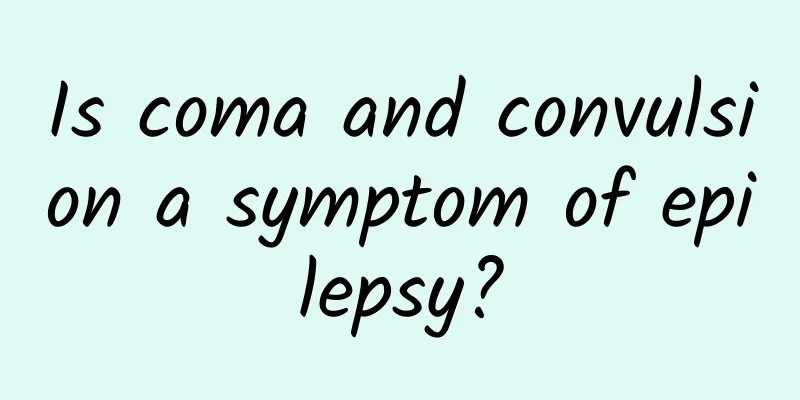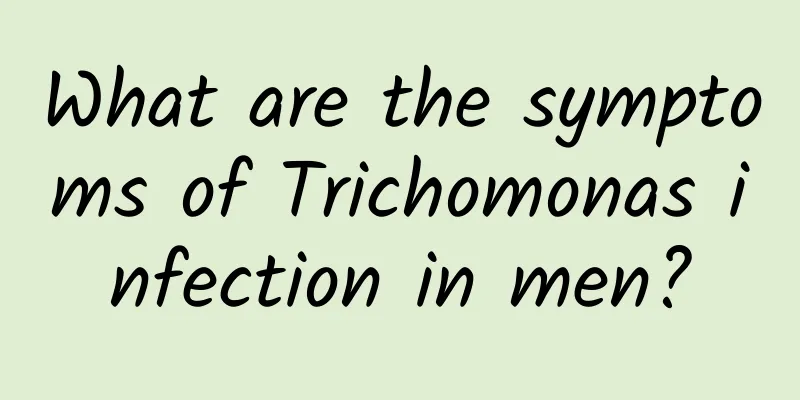Is coma and convulsion a symptom of epilepsy?

|
When someone around us is in a coma or convulsions, most of us will think that this is epilepsy. Epilepsy is usually called epilepsy, which is a brain nerve disease. So what are the symptoms of epilepsy? Is coma and convulsion epilepsy? There is a certain probability that coma and convulsions are caused by epilepsy, but it is not absolute. So it is better to go to the hospital for diagnosis. Symptoms of epilepsy Epilepsy can occur in all age groups. The clinical manifestations of epileptic seizures are complex and varied due to the different starting sites and transmission modes of abnormal discharges. 1. Generalized tonic-paroxysmal seizures (grand seizures): Characterized by sudden loss of consciousness and generalized rigidity and convulsions, a seizure usually lasts less than 5 minutes, often accompanied by tongue biting, urinary incontinence, etc., and can easily cause suffocation and other injuries. Tonic-clonic seizures can be seen in any type of epilepsy and epileptic syndrome. 2. Absence seizures (minor seizures): Typical absence seizures are sudden onset, cessation of movement, staring, no response to calls, blinking, but with little or no motor symptoms, and ending suddenly. They usually last 5-20 seconds, rarely more than 1 minute. They are mainly seen in children with absence seizures. 3. Tonic seizures: The symptoms are strong and continuous contraction of the whole body or bilateral muscles, muscle rigidity, which often lasts from a few seconds to tens of seconds, but generally does not exceed 1 minute. Tonic seizures are more common in patients with epilepsy and diffuse organic brain damage, and are generally a sign of severe illness, mainly in children, such as Lennox-Gastaut syndrome. 4. Myoclonus seizures: It is a sudden, rapid and short contraction of muscles, which is similar to electric shock-like shaking of the body or limbs. Sometimes it can occur several times in a row, and it often occurs after waking up. It can be a whole-body movement or a local movement. 5. Spasms: Refers to infantile spasms, characterized by sudden, short-term rigid flexion or extension contraction of trunk muscles and bilateral limbs, often manifested as paroxysmal nodding and occasional paroxysmal backward leaning. The entire process of muscle contraction takes about 1 to 3 seconds and often occurs in clusters. It is common in West syndrome and sometimes can also be seen in other infantile syndromes. 6. Atonic seizures: Due to the sudden loss of muscle tension, the body's normal posture cannot be maintained, resulting in symptoms such as cataplexy and falling of the limbs. The seizure duration is relatively short, usually lasting from a few seconds to more than 10 seconds. Short-duration seizures are usually not accompanied by obvious consciousness disorders. 7. Simple partial seizures: The patient is conscious during the seizure, which lasts from a few seconds to more than 20 seconds, and rarely exceeds 1 minute. Depending on the origin of the discharge and the affected area, simple partial seizures can be motor, sensory, autonomic, and psychiatric. The latter two rarely occur alone and often develop into complex partial seizures. 8. Complex partial seizures (psychomotor seizures): Symptoms include sudden cessation of movement, staring eyes, not responding to calls, not falling, and no change in complexion. Some patients may experience automatisms, which are involuntary and unconscious movements, such as licking lips, smacking lips, chewing, swallowing, groping, wiping face, clapping hands, walking aimlessly, talking to oneself, etc., and cannot recall after the attack. 9. Partial secondary generalized seizures: Simple or complex partial seizures can be followed by generalized seizures, the most common of which is generalized tonic-clonic seizures. Partial seizures followed by generalized seizures still belong to the category of partial seizures. They are obviously different from generalized seizures in terms of etiology, treatment methods and prognosis. Therefore, it is particularly important to distinguish between the two in clinical practice. |
<<: What are the symptoms of male sterile prostatitis?
>>: What causes kidney deficiency in men?
Recommend
What medicine is used for scrotal dampness? Treatment of scrotal dampness
The scrotum of men contains a very important sexu...
What are the effects of phimosis on boys?
The physical health of boys is very important, bu...
How do men get urinary tract infections?
Among patients with urinary tract infection, men ...
What causes pimples on the side of the scrotum?
Many men have symptoms of pimples on the side of ...
How long is normal for a tube to be stretched?
Masturbation is a sexual need of men, especially ...
Will sperm die if exposed to cold water?
Nowadays, the stress resistance of people at work...
What are the methods of muscle training for men?
Have you seen the strongmen in the movies? Are th...
Prostate Problems Treatment with Traditional Chinese Medicine
Usually, many office workers are busy with work a...
How to remove squid skin? It only takes three minutes!
If you buy the freshest squid in the market, you ...
Is rapid ejaculation a sign of kidney yin deficiency?
When couples engage in sexual intercourse, some m...
How long does it take to recover after ejaculation?
Male ejaculation is different from female ovulati...
Will it hurt for boys the first time?
Everyone knows that women will feel pain during t...
Blisters on the glans penis do not hurt or itch
Sexually transmitted diseases have a great impact...
What are the symptoms of non-gonococcal prostatitis?
The prevalence of non-gonococcal prostatitis has ...
Testicular discomfort after ejaculation
Many male friends have found that after ejaculati...









